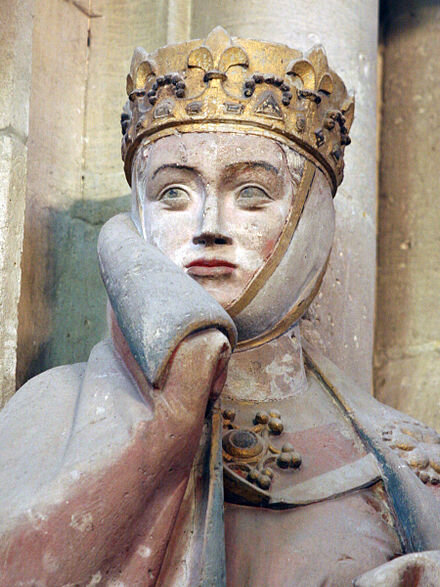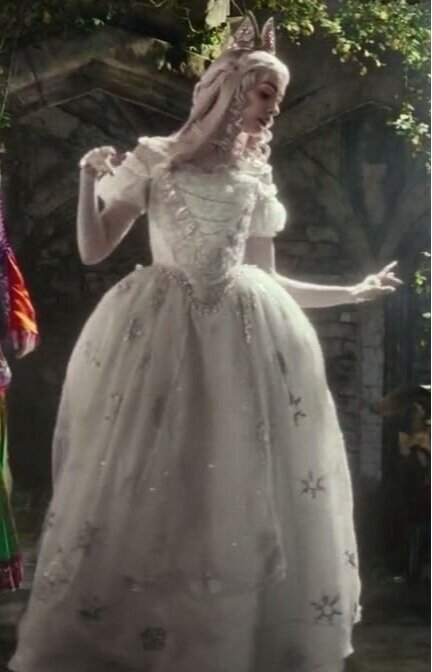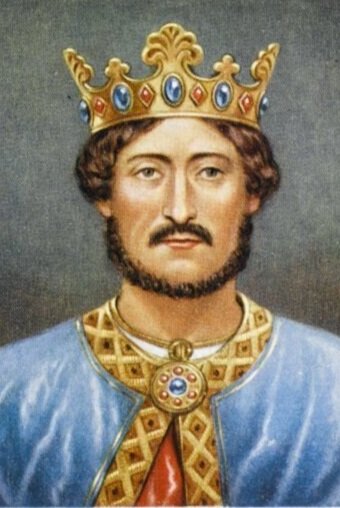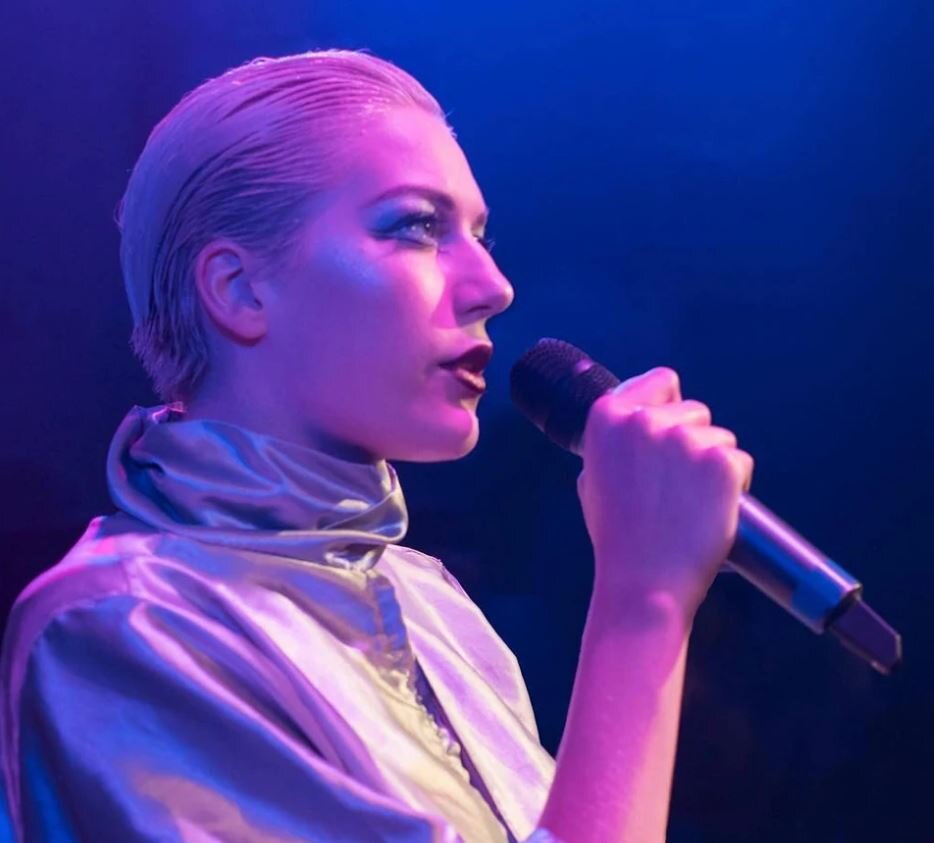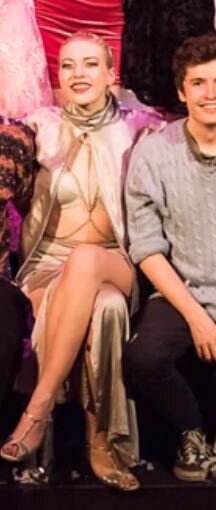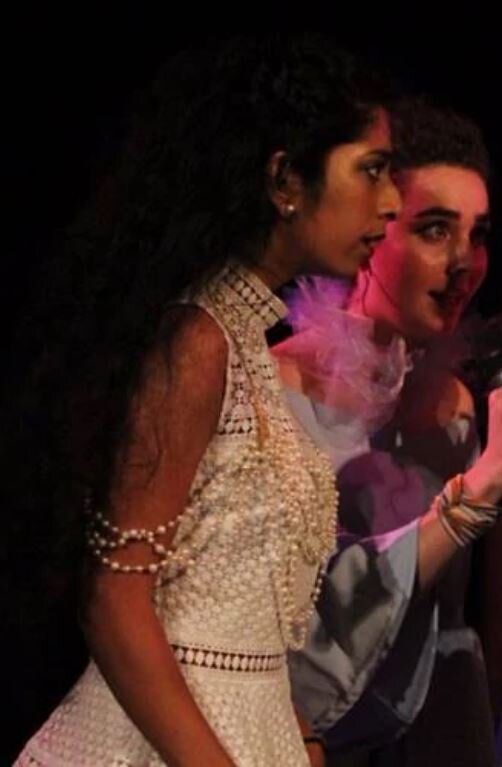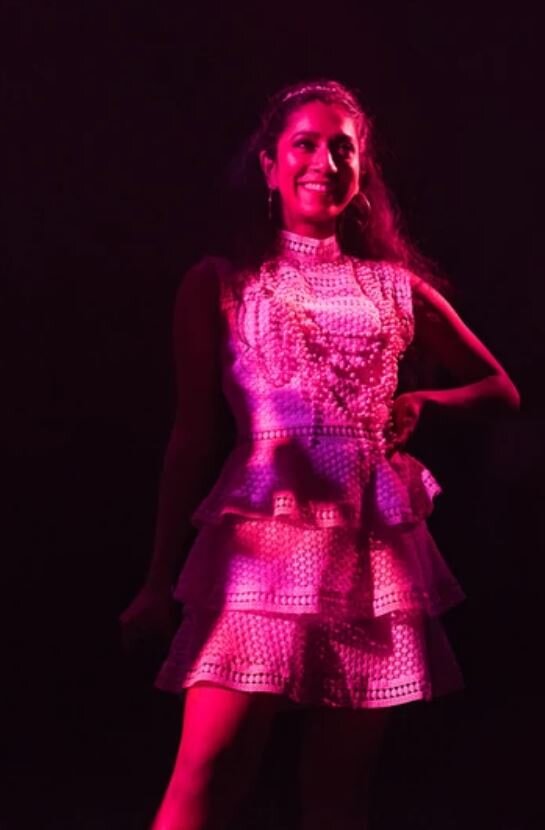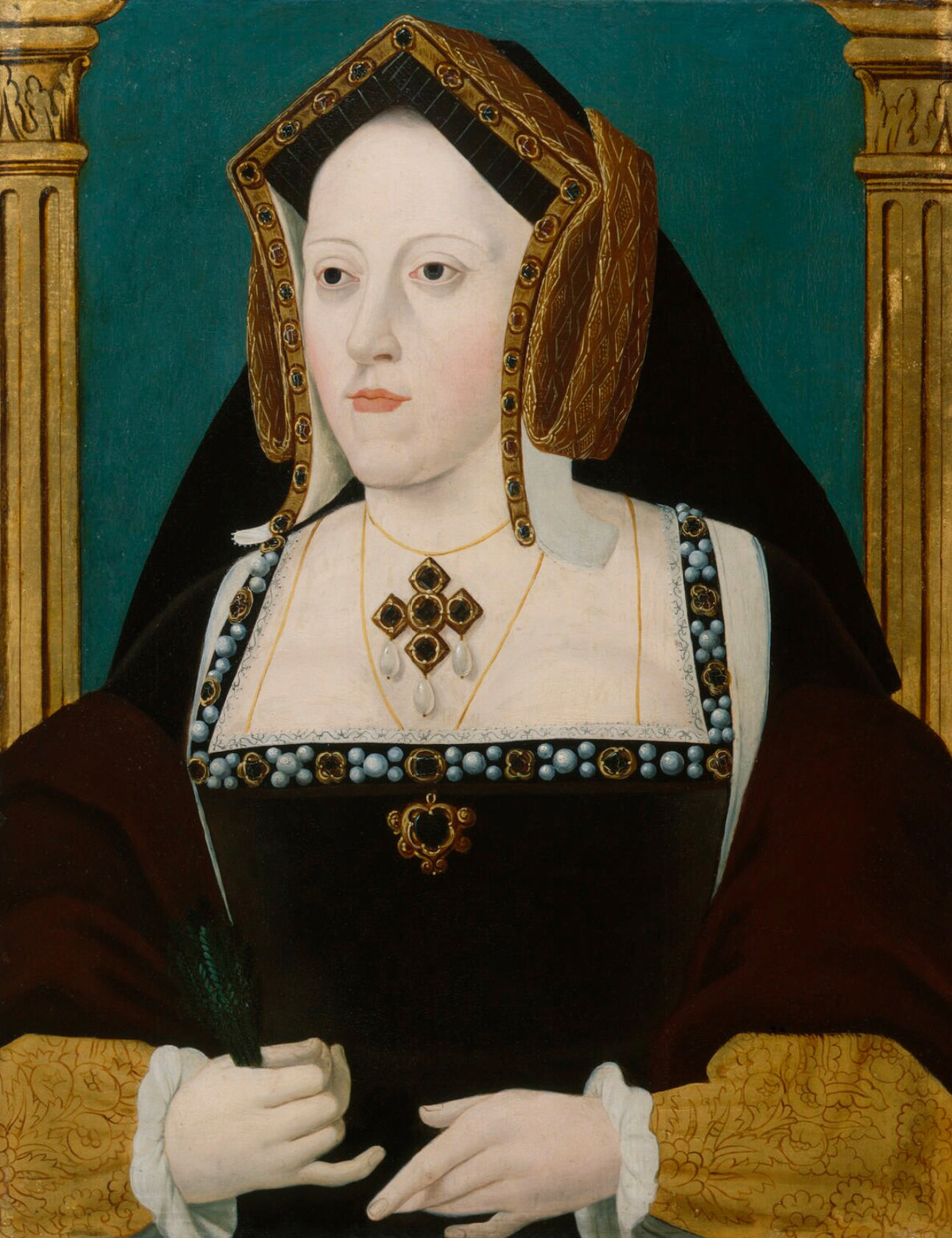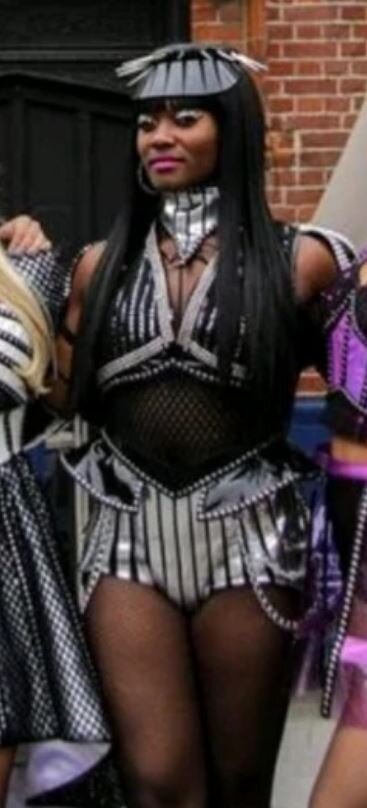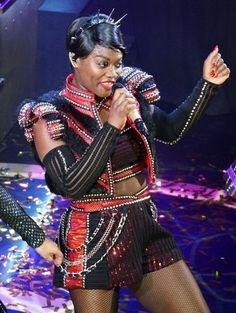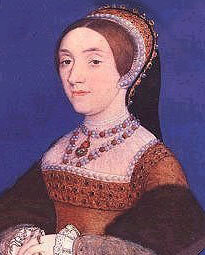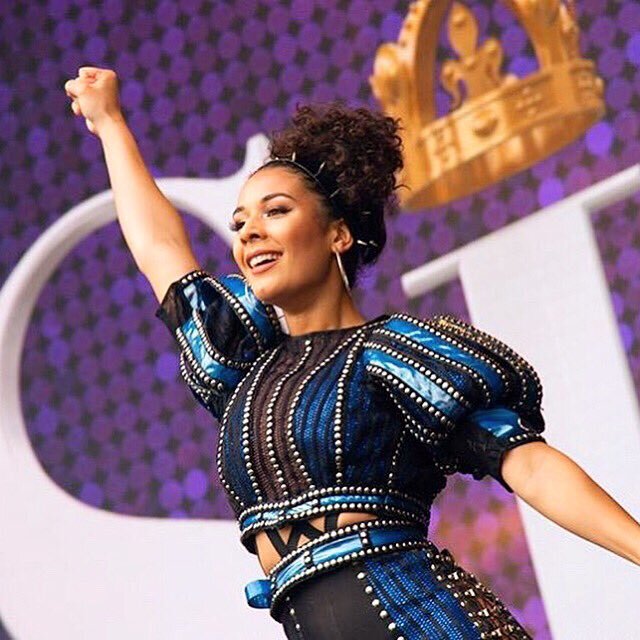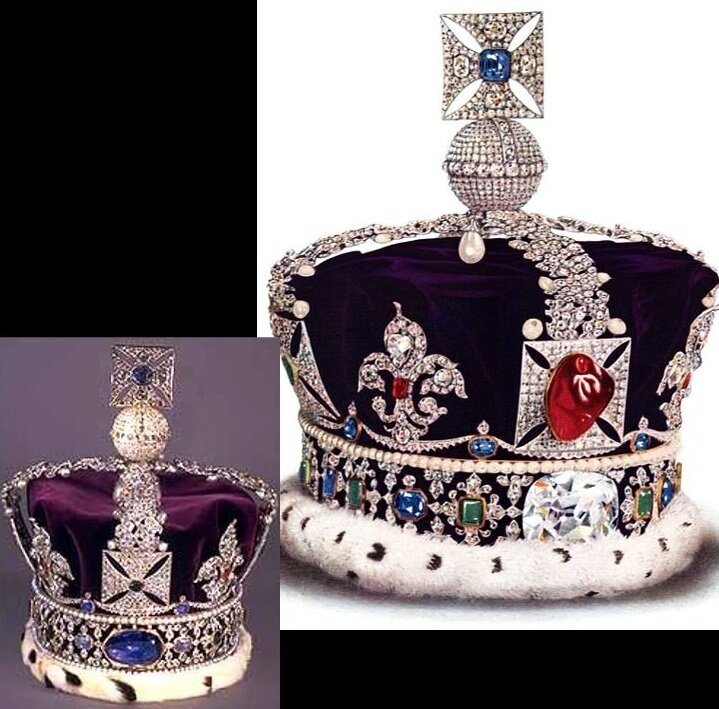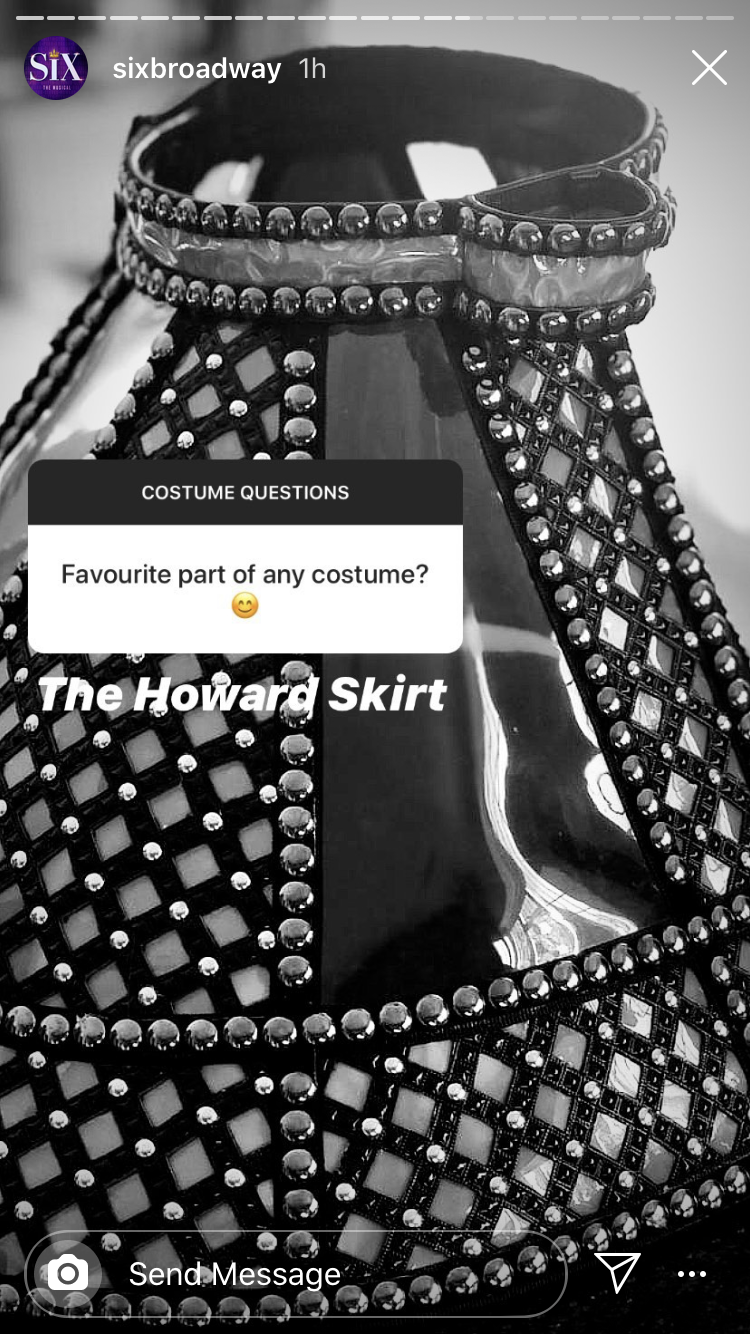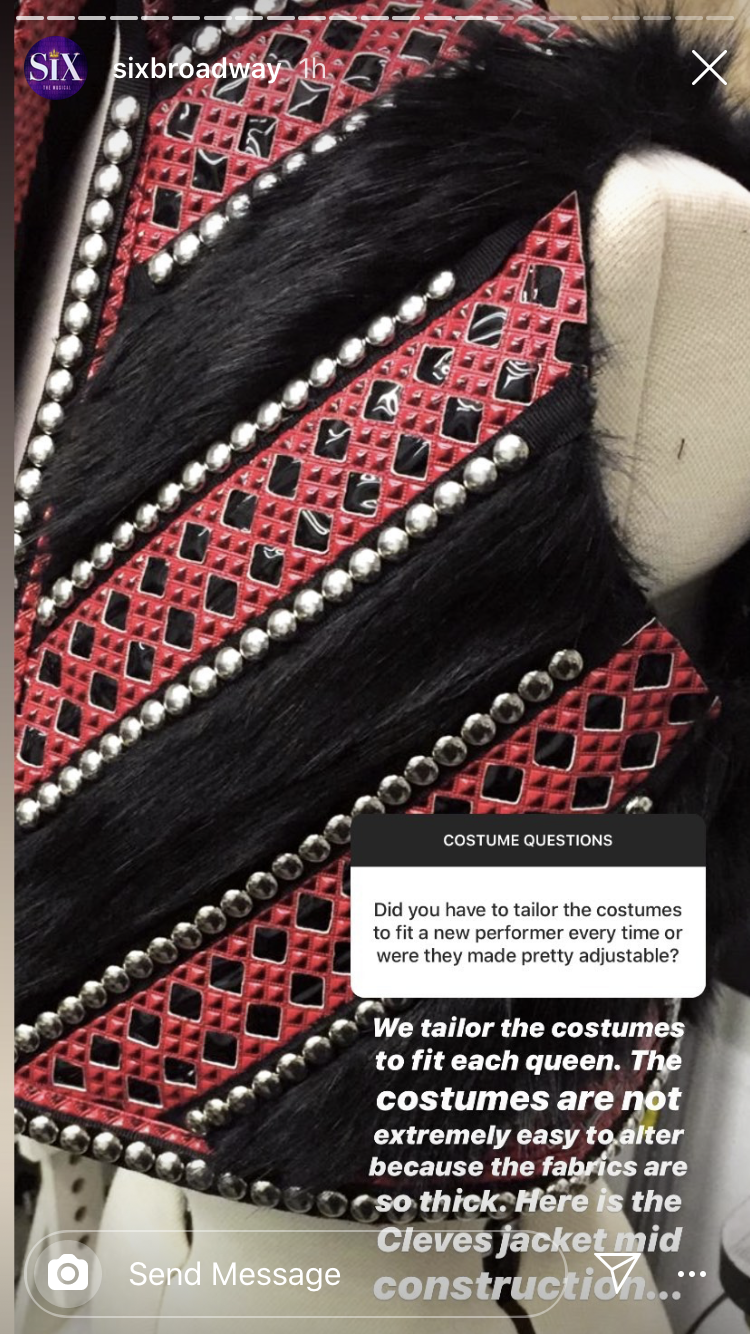18 Things I Learned from Six Alternate Vicki Manser's Workshop and Q&A!
All My Six Posts!
Over-Analyzing All the Historical References in Six- “Ex Wives,” “No Way,” “Don’t Lose Your Head” “Heart of Stone” “Haus of Holbein” “Get Down”
The Tudor Crown Inspiration in Six’s Logo; The Tudor Fashion Elements of the Costumes in Six (with Painting References)
Six the Musical Wives 1-3: Historical and Modern Costume Inspirations; Six the Musical Wives 4-6: Historical and Modern Costume Inspirations
The Ladies in Waiting of Six: Historical Inspirations and Costumes; Details from Six Costumer Gabriella Slade’s Instagram Takeover
The Early Costumes of Six the Musical: From Edinburgh to Cambridge to London
Updated Six the Musical Costumes for Broadway!; The Shoes of Six the Musical
The Alternate Costumes of Six the Musical; How the Six Alternates Change Their Styling for Each Queen
Virtual Dance Workshops and Q&As with Different Six Cast Members!
This morning, I participated in a virtual dance workshop and Q&A with former Six alternate and former Katherine Howard actress Vicki Manser! The workshop was hosted by the brilliant Theatre Fan Parties and is the second workshop of six I’ve signed up for. I got up at 4:30 AM EST. It was rough. I really don’t know how I’m awake right now but honestly I’m going to take a nap right after I post this.
At the beginning of the class, Vicki stated that like with Hamilton and many other shows, Six performers are only allowed to teach certain parts of the dances. She taught us the second chorus and second verse of “Don’t Lose Your Head.” The workshop was only about 25 people so you got to like, talk to Vicki a bit in the chat and get specific clarifications on dance steps such. When I joked that my cats weren’t cooperating with the “switch places” part in Don’t Lose Your Head, she even asked to see my cat!
For the workshop, Vicki brilliantly turned the lights in her apartment purple, the Six theme color! She noted that the first move in “Don’t Lose Your Head,” with the penguin hands, head and shoulder leans, and heel/toe movements, took her weeks to learn, and encouraged participants to just do it with the head and shoulder movements if it was easier. She was super encouraging throughout.
Disclaimer as always on these notes: I typed as quickly as I can, and tried to maintain all Vicki’s exact words, but I can’t promise that these are perfect quotations unless there are actual quotations around them. They’re more like a paraphrase capturing all the original intention of her words.
1. Is the choreography the same in all the Six productions throughout the world?
Yes! They did some adaptations to the choreo on Broadway, but then they went back and taught it to everyone, so every version should be exactly the same.
2. Favorite queen?
I’ve got a soft spot for Boleyn.
3. What queen do you relate to the most?
I relate to Boleyn the most, 100 percent.
4. What’s going to be the first show you see after lockdown is done?
Dear Evan Hansen! She previously had plans to see Courtney [Stapleton, another Six alternate, who previously did “Bat Out of Hell” with Vicki] in it as Zoe and definitely needs to see her in it.
5. How much of the history behind the musical was taught during the rehearsal process?
We were sent documentaries and videos and things to watch before we started the rehearsal process, so we understood where Toby and Lucy got all their ideas and inspiration for the show. While Courtney [Stapleton] and I were in Bat Out of Hell, we sat and watched them in our room backstage.
6. How much time do you have to learn a dance routine for Six?
You’ll have maybe a couple of hours [of dance rehearsal] in the morning, then a couple hours of singing, then boom – done, then you’re on to cleaning. [Cleaning refers to making the movements of the dance more accurate and precise]
7. What’s the toughest queen for you to play physically and emotionally?
Physically? The hardest by far in my opinion….you know what, they’re all hard.
Aragon, when you don’t play her all the time, is hard. The stamina that you need for that track is INSANE. It’s really difficult. It’s also got quite a lot of choreo as well.
But saying that – when I started as Cleves, I listened back to my dress rehearsal run and I’m like, ‘I sound awful.’
Also, Howard is very difficult to get your breathing right as well. You have to schedule your breathing and swallowing points. If you don’t swallow, your mouth fills up with saliva and you can’t breathe.
Emotionally, I think Howard is the most challenging to get right, because she goes on such a journey and literally tells her whole life in the one song. And it’s such an important message to get across. You need to get the audience to laugh with you and be on your side [at the beginning] and then you switch to, ‘how dare you laugh at me, what I went through was heart breaking.’ When the audience feels guilty, you know you’ve done your job. I used to love it when I didn’t get a round of applause at the end, because people feel so uncomfortable, and you FEEL that uncomfortableness and I’m like, ‘YASSSS.’
8. If you auditioned for Six again, what would you sing?
She mentioned that she sang ‘Run to you’ by Whitney Houston at her initial audition. ‘Maybe I’d do dream girls – something Effie.’
9. What thoughts do you have on the alternates having their own separate costumes? Did you have any input on the costume color or style?
I didn’t have any input on the color or style, but I LOVED the fact that the alternates had their own costumes. Everyone is unique and has their own version of the character. I think they chose the blue for me because they thought it would suit me and like, match my eyes [at this point she moved near the camera and opened her eyes very wide]. Gabby [costume designer Gabby Slade] thinks about what suits you as a person.
They wanted to put me in shorts because I go on as Cleves and that’s easy to dance in. They put Courtney [Stapleton] in pants because she goes on as Parr.
And now everyone has their different bits to go on as different queens. If I went back as an alternate now maybe I’d have like six different costumes.
I have a whole post full of photos of different alternate costumes over here, by the way!
10. What inspired you to do musical theatre?
I danced from the time I was a little girl. When I was 3 or 4, I started ballet. I was obsessed, that’s all I wanted to do. I broke my leg twice, and the second time around, I Just gotten out of plaster. I wasn’t able to dance and it was our annual dance show. She said well, you can’t dance, so maybe you can sing something. I was like 8 or 9. I sang a song and she gave me a little acting part as well, and that’s when I was like, oh it’s not just dancing I like. I love it all, give me it all. Let me do it all please. I joined a youth theatre troupe when I was like 10 and started doing it then.
11. What did she think about booking Six?
When I got the audition for Six, I hadn’t heard of it ever. There was nothing on youtube yet, maybe a bit from when they were in Edinburgh and when they were on tour [the 2018 tour]. As I got through the audition process, I realized how amazing it was.
“When I found out I got Six, I ordered 80 pounds of Chinese for three people to celebrate.”
12. Where did the absolute classic line [which vicki often said at performances] come from?
I used to be terrible about ad-libbing in the show. I got told off for it all the time and told to stick to the script, but in the moment I’d go crazy. The part where they huddle at the end was never supposed to be funny, but I kept saying funny things and now everyone does it and tries to get the funniest line. I’m the bad influence definitely. As Boleyn one day, I just said “Absolute classic” into the phone while doing a silly face and it stuck.
13. What’s the most last minute show you’ve played?
I never went on midshow at Six, but I did them all the time at Bat Out of Hell.
The quickest for Six was I found out at the quarter, maybe about 15 minutes before hand. I think it was Cleves maybe?
[host Taylor Farrow Said that sounded terrifying to him, and Vicki responded] Sometimes it’s better, it gives you no time to think about it and no time to panic.
14. How do you stay motivated while in lockdown?
You have to stay ready. I have to be mentally ready and physically ready for future auditions and keep my vocals fit. I’ve just been thinking – I don’t know when it’s coming back, so I’ve got to be ready at all times.
Various Auditioning and “Making it” advice:
15. What happens if I don’t get into drama school?
If you don’t get in, don’t stress, it’s not the end of the world. A majority of people in the industry didn’t get in the first time. A lot of people did gap years and just worked to train and expand their abilities and auditioned the next year. Don’t stop training just because you didn’t get into what you wanted this year! Also, not everyone has finished auditioning yet, so if you didn’t get into what you wanted straightaway, then apply for a last minute place somewhere else. That’s exactly what I did. When I was 18, I had my heart set on going to Artsed, as I could stay home while going there and I didn’t feel ready to leave home yet. I auditioned for maybe 6 schools and got into three of them, but not Artsed. I was gutted, absolutely gutted. That’s when I auditioned for Erdang [which also would allow her to stay at home while going there], in May or June time, and I got in. That’s where I ended up going.
[host Tayler popped in here to also note that because of COVID19, a lot of drama schools have heavily extended their audition period]
16. How to get into drama school and pursue a musical theater career if you’re not the strongest dancer:
Don’t give up just because you’re not a strong dancer, that’s not the end. If that’s not your strongest thing, work on it, train, attend Instagram live classes. Don’t stop working! Also – it doesn’t necessarily matter if you’re the best dancer or not – they’re looking for a diamond in the rough.
17. Dealing with setbacks:
You get so many nos and so many knockbacks. You think you can be perfect for a job and get cut within 20 second. (cough, Frozen, cough). I give myself a day where I say – okay, that didn’t go my way, I’ll have a cry, say I’m really annoyed, and give myself the day to mope around and feel sorry for myself. Then I gotta get back on it the next day. You’ve gotta be your biggest supporter and find that confidence from somewhere.
18. Auditioning Tips for Six:
If you have any idea about what Six is looking for, get it out of your head. They want to see what you as an individual can bring to the table that’s different. You only have to look at the difference between me and Lexi [McIntosh, who plays Anna of Cleves]. We are two totally different people. She is so cool. I am an absolute goofball. When she performs she’s got so much swag and has the audience eating out of the palm of her hand. And I was her understudy. Don’t go in pretending to be someone you’re not.






















